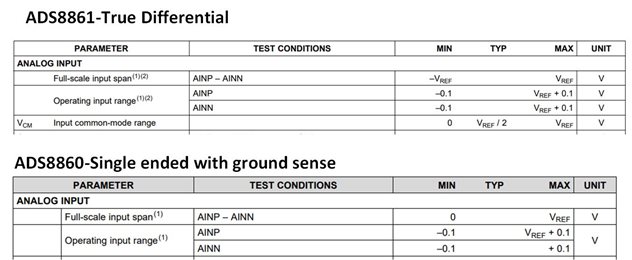Other Parts Discussed in Thread: ADS8860,
Hi Team,
Can you please help us with our customer's inquiry below?
We are using the ADS8860 in an existing design. I want to add an offset to the AIN pin. the datasheet says that I need to keep that at ground between +/- 0.1V. An FAE told me that I could swap from the ADS8860 to the ADS8861 and then have a larger signal on AIN. However, these parts share a datasheet, and I don't see anything in there indicating that I can move AIN off of +/-0.1V from ground for any part in that family.
My signal into the AIP pin swings from 1.6V to 2.6V. Purpose of query is that I want to put a 1.5V signal on the AIN pin to remove that offset. Can it be achieved with ADS8861?
Regards,
Danilo


